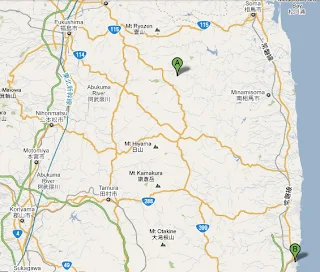Where do we put all the spent fuel?
The Japanese haven't had a clue, because like everyone else with common sense, the Japanese also are NIMBYs (Not In My Backyard). So they've been dragging their feet on what to do with all those spent fuel rods for years.
In the interim they've had nowhere to go with them, so they've ganged them up in the pools in the reactor plants themselves in ever increasing numbers, in effect putting them in everyone's backyard anyway. And as we've been seeing, the failure to keep those pools, some thirty and forty feet deep, full of water in a crisis has caused most, if not all, of the trouble.
The problem is the nuclear waste.
But Richard Cowan for
Reuters says that problem is even worse in America:
Of 104 nuclear reactors in the United States, [Robert] Alvarez [a former US DOE official under Clinton] said, 34 are of the same design -- open-air, elevated storage pools -- as the Fukushima plant.
But the U.S. pools are storing much more spent fuel than the ones in Fukushima and "are currently holding, on the average, four times more than their design intended," he said.
That's because the United States has been unable to settle on long-term sites for storing waste from nuclear power plants.
You can thank Harry Reid of Nevada for that. He doesn't want Yucca Mountain to be the home for all that radioactive waste anymore than anyone else wants it in their backyard.
Most Republicans, meanwhile, remain enthusiastic boosters for nuclear power, even as they push to curtail spending at the Office of Nuclear Energy and elsewhere. The House budget bill passed earlier this year included more than $330 million in cuts for nuclear waste disposal, safety oversight and other programs, according to advocacy groups.
So says Dan Eggen for
The Washington Post, who provides a detailed accounting of the nuclear industry's lobbying efforts this week in the wake of the disaster, and how three major players have been throwing around upwards of $20 million in recent years, much of it to Democrats.
As in Japan, we have an on-going but bi-partisan decision to make no decision about a gorilla in the living room who glows in the dark.
It's high time we made one, or give up on nuclear power altogether, because we're just asking for it if we maintain the status quo.



